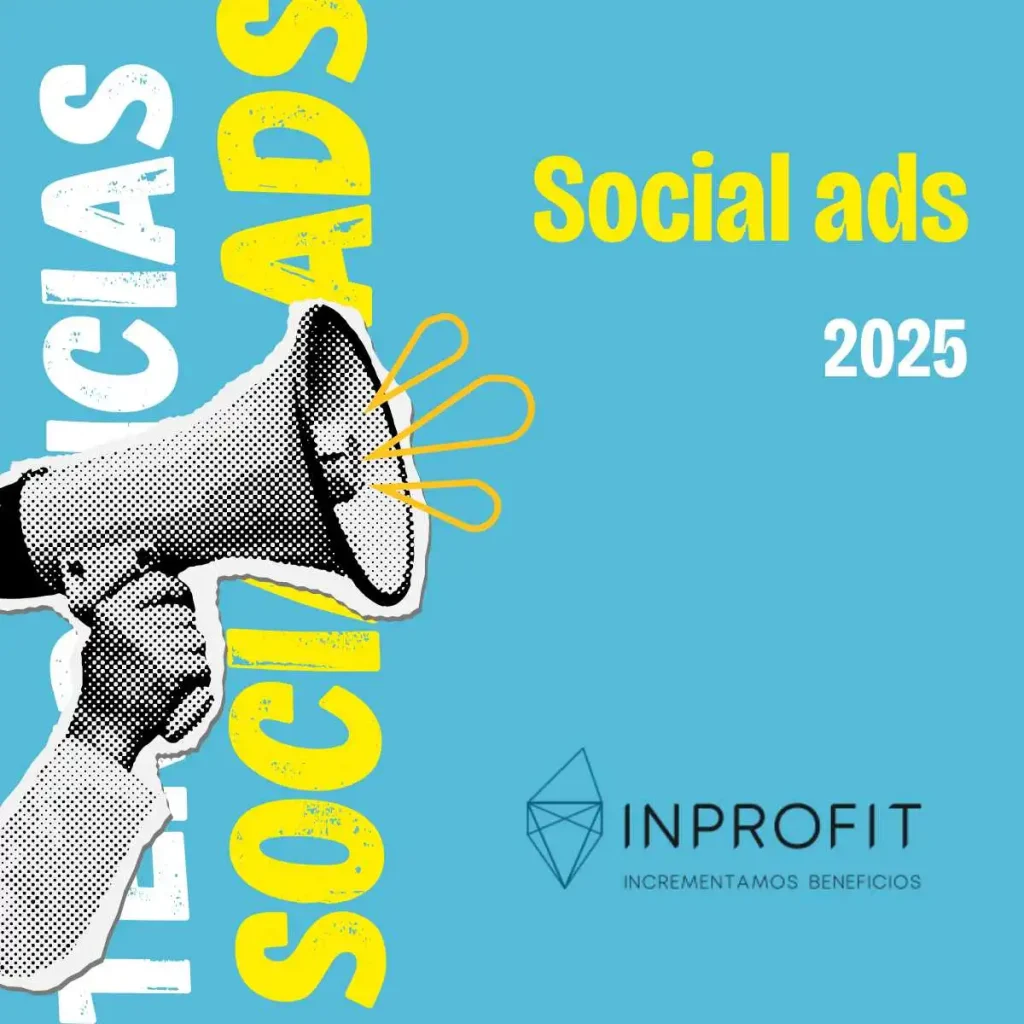In this article, we will explore the main investment focuses for 2025, analyzing the emerging trends, the platforms that will dominate the digital landscape and the strategies that will make a difference.
The rise of vertical and niche social networks
While platforms such as Facebook, Instagram and TikTok remain key pillars of any marketing strategy, 2025 will see exponential growth in vertical social networks. These platforms, designed for specific audiences, offer unique opportunities to connect with highly segmented consumers.
For example, platforms such as LinkedIn will continue to be essential for B2B marketing, while others such as Pinterest or Behance will be key for creative and design industries. In addition, emerging networks focused on particular interests, such as communities of gamers, fitness enthusiasts or sustainability enthusiasts, will gain ground.
Why invest here?
- More engaged audiences: Vertical network users tend to be more engaged with content, which increases conversion rates.
- Less competition: By focusing on specific niches, brands can stand out more easily.
- More efficient advertising: Advanced targeting makes it possible to optimize advertising spending.
The consolidation of the metaverse and virtual environments
The metaverse is no longer a futuristic idea; it is a reality that is rapidly taking shape. By 2025, virtual environments are expected to be an integral part of consumers’ digital experience. Brands like Nike, Gucci and Coca-Cola are already exploring this space, creating immersive experiences that go beyond traditional advertising.
Opportunities in the metaverse:
- Virtual stores: Allow users to interact with products in a 3D environment.
- Virtual events and concerts: They offer new forms of engagement with the audience.
- Contextual advertising: Advertisements integrated into the virtual environment in a non-intrusive manner.
Is it worth the investment?
Innovation and differentiation: Entering the metaverse is not only a bet on the future, but also an opportunity for your brand to establish itself as a benchmark in its sector. Being among the first to explore this space can make a difference and project a cutting-edge image.
New revenue streams: The metaverse is not only a breeding ground for creativity, but also for business. The sale of digital products and NFTs (non-fungible tokens) is opening doors to innovative monetization models that seemed unthinkable before.
Deep engagement: One of the biggest advantages of the metaverse is its ability to create immersive experiences that connect with users on a more intense emotional level. These experiences not only capture attention, but also foster a longer and more meaningful relationship with consumers.
The power of video marketing: short, long and live
Video remains the king of content, and by 2025 its importance will only grow. However, consumer preferences are evolving. While short videos (such as TikTok and Reels) are ideal for quickly capturing attention, longer formats (such as video podcasts or branded documentaries) allow for deeper storytelling.
In addition, live streaming videos will continue to gain popularity, especially on platforms such as YouTube, Instagram and Twitch. This format offers authenticity and allows interaction with the audience in real time.
Yes or no?
- High engagement: Videos generate more interaction than any other type of content.
- Versatility: They can be adapted to different platforms and marketing objectives.
- Audience retention: Longer, live formats foster a more lasting connection with viewers.
Artificial Intelligence (AI) and automation
AI is already transforming marketing, and by 2025 its impact will be even greater. From personalizing content to optimizing advertising campaigns, AI-based tools are enabling brands to be more efficient and effective.
Key applications of AI in 2025:
- Advanced chatbots: They offer 24/7 customer support and improve the user experience.
- Content generation: Tools such as GPT and Dall-E allow you to create high quality text, images and videos in a matter of seconds.
- Predictive analytics: Helps anticipate consumer trends and behaviors.
Is it time to implement now?
Artificial intelligence is no longer a distant option; it is a tool available to any company that wants to optimize its social media presence. But why should you consider implementing it now?
Saving time and resources: One of the biggest advantages of AI is its ability to automate repetitive tasks. This not only reduces operating costs, but also frees up time to focus on more strategic aspects of your business.
Personalization at scale: Thanks to AI, you can deliver unique and tailored experiences to each user, even if your audience is massive. This not only improves customer satisfaction, but also increases loyalty to your brand.
Data-driven decision making: AI allows you to analyze large volumes of information in real time, which translates into more accurate and effective marketing strategies. It’s no longer about intuition, but about decisions backed by hard data.
Sustainability and purposeful marketing
Consumers in 2025 will not only be looking for quality products, but also for brands that share their values. Sustainability and social commitment will be key factors in purchasing decisions. Companies that integrate these values into their marketing strategy will not only gain customer loyalty, but also differentiate themselves from the competition.
Strategies to stand out:
- Transparent communication: Report on the company’s sustainable practices.
- Collaborations with social causes: Support initiatives that resonate with the audience.
- Eco-friendly products: Offer options that reduce environmental impact.
The growth of social commerce
Social commerce, or commerce through social networks, is revolutionizing the way brands sell their products. Platforms such as Instagram, TikTok and Pinterest are integrating direct shopping features, allowing users to purchase products without leaving the app.
Social commerce trends for 2025:
- Influencer marketing: Content creators will continue to be key to driving sales.
- Augmented Reality (AR): Allows users to try products virtually before buying.
- Live shopping: Combines live streaming with instant shopping options.
Why invest here?
- Direct conversion: Reduce the sales funnel to a minimum.
- Improved user experience: Facilitates the purchase process.
- Increased visibility: Platforms prioritize commercial content in their algorithms.
The advertising future of social marketing
The future of social marketing advertising is evolving towards a deeper integration between brands and consumers, where personalization, artificial intelligence and real-time interaction will play a key role. Social networks are no longer just communication platforms, but business ecosystems where advertising must be more strategic and tailored to the individual interests of users. In this context, brands should focus on building genuine relationships with their audience, using data and advanced algorithms to offer relevant content at the right time.
One of the most significant changes in social marketing advertising is the rise of non-intrusive sponsored content, where ads are organically integrated into users’ feeds. Platforms such as Instagram, TikTok and LinkedIn are optimizing their ad formats so that these are perceived as native content rather than simply interruptions. This means that brands need to focus on creating engaging and valuable ads that generate interactions and engagement rather than simply selling products. Brand narrative and storytelling will be essential to capture attention in an information-saturated digital environment.
Artificial intelligence and machine learning are revolutionizing the way ads are designed and distributed on social networks. With the ability to analyze large volumes of data in real time, these technologies make it possible to predict consumer behavior and automatically adjust campaigns to maximize their effectiveness. Advertising algorithms are evolving to prioritize relevance and user intent, which means that brands that take advantage of these advances will be able to realize a much higher ROI on their social marketing strategies.
Social commerce will also be a key factor in the future of social media advertising. Platforms are integrating direct shopping tools, allowing users to purchase products without leaving the application. This shift is transforming the way companies design their ads, focusing on generating fast and seamless shopping experiences. Interactive ads, live shopping and collaborations with influencers will continue to gain prominence, creating an ecosystem where advertising and conversion are completely interconnected.
As technology advances and consumer expectations change, social marketing will need to become increasingly authentic, transparent and community-driven. Brands that manage to establish an emotional connection with their audience and adapt their strategies to emerging trends will dominate the advertising landscape. In this constantly evolving environment, the key to success will not only be creativity, but also adaptability and data-driven decision-making intelligence.
Are you ready to take the next step? The time to act is now. Discover the figure of the Growth Partner.



